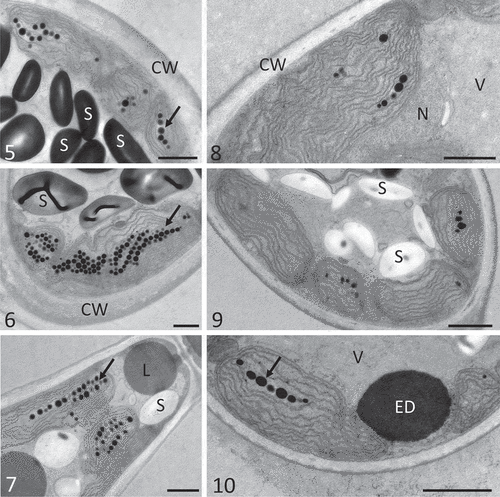Figures & data
Fig. 1. Effects of photon fluence rates on oxygen evolution of Batrachospermum turfosum. The inset shows the PI curve in low light. Data were fitted according to the model of Walsby (Citation1997). All measurements were conducted at 20°C (n = 4, means ± SD).
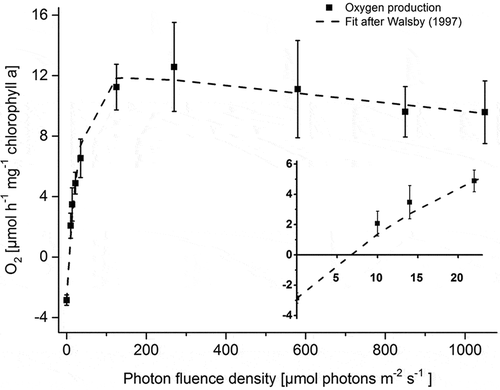
Fig. 2. Temperature dependence of photosynthesis in Batrachospermum turfosum. A. Oxygen production at 100 µmol photons m–2 s–1, dark-respiration and optimum quantum yield (FV/FM). Negative values are shown as stacked bars and significant differences between means are marked with different letters. B. Ratio between photosynthesis and respiration as a function of temperature. Significant differences between mean values were calculated by one-way ANOVA followed by the Fisher’s LSD post hoc test (p ≤ 0.05; n = 4, means ± SD).
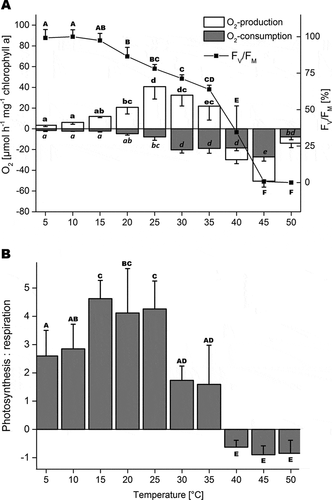
Fig. 3. Changes in effective quantum yield (ΔF/FM’) in Batrachospermum turfosum in response to irradiation. P = PAR; PA = UV-A; PAB = UV-AB. Data points (n = 10, means ± SD) labelled with the same letter do not differ significantly from each other (two-way ANOVA and Bonferroni’s post-hoc test; p ≤ 0.01). Light (18 h) and dark (6 h) phases are indicated by grey and black shading, respectively, for the irradiation treatments, and by white and black shading for the recovery phase.
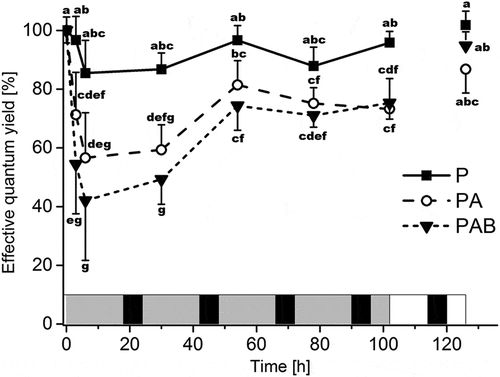
Fig. 4. Primary and accessory pigments in Batrachospermum turfosum upon irradiation and recovery. A. Primary pigments B. Phycobiliproteins. P = PAR; PA = UV-A; PAB = UV-AB. Thalli were exposed to irradiation treatments (P, PA or PAB) for 102 h, followed by 24 h of recovery in the absence of UVR (n = 5, means ± SD). Significances between control (0 h) and irradiated samples were tested by one-way ANOVA followed by Bonferroni’s post-hoc test. Statistical differences between means are indicated by 1, 2 or 3 asterisks for p ≤ 0.05, p ≤ 0.01 and p ≤ 0.001, respectively. PC = phycocyanin; APC = allophycocyanin.
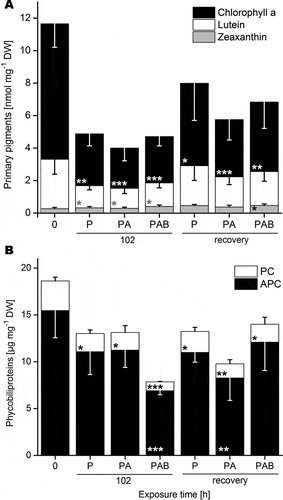
Figs 5–10. Transmission electron micrographs of Batrachospermum turfosum whorl cells upon irradiation and recovery. Thalli were exposed to PAR, UV-A and UV-AB ( & , respectively) for 102 h followed by recovery in the absence of UVR ( & ). . Parietal chloroplasts with plastoglobules (arrow) and cytoplasmic starch grains. . Accumulation of plastoglobules (arrow). . Plastoglobules (arrow), cytoplasmic lipid bodies. . Chloroplast with parallel thylakoid membranes. . Intact chloroplasts. . Reduced number of plastoglobules (arrow), electron-dense body in the cell cortex. Abbreviations: CW, cell wall; ED, electron-dense body; L, lipid body; N, nucleus; S, starch; V, vacuole. Scale bars: 1 µm.
